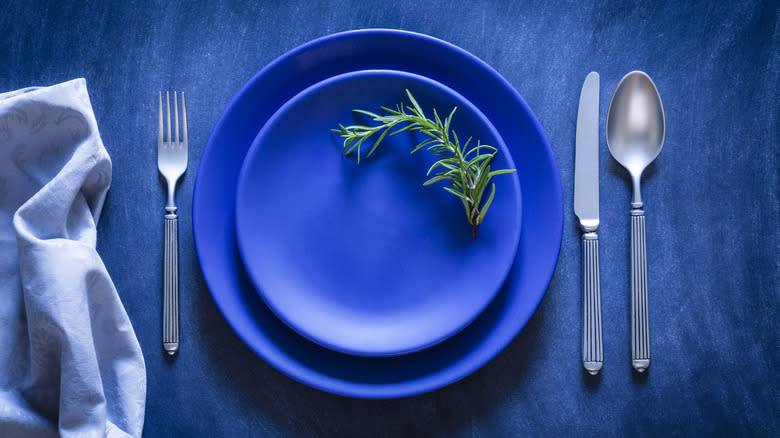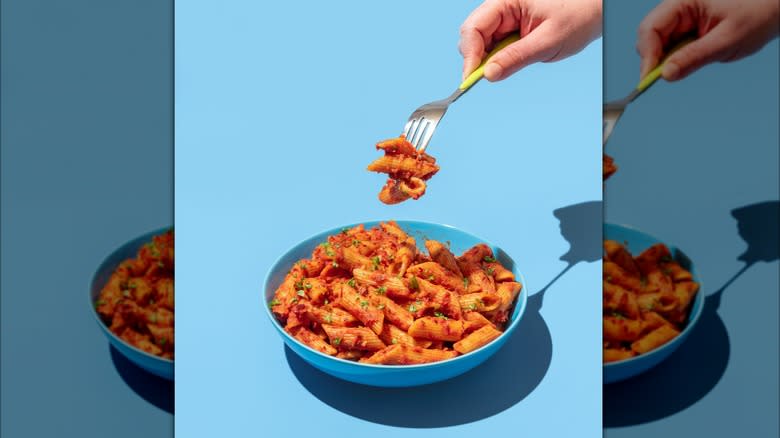Why Chefs Avoid Serving Food On Blue Plates

It's no secret that different colors stimulate different emotional responses in the brain, and in that capacity, few colors are as multi-dimensional as blue. Blue can seem calming and serene, or icy and distant. "Feeling blue" is a colloquialism for "sad," yet per one global study, blue is also the most popular "favorite color" in the world. Perhaps unsurprisingly, blue takes on another dimension entirely when it comes to the culinary world. We're not talking about the budget-friendly "blue plate special" your favorite local diner might offer -- we're talking about actual blue dinner plates.
Plates are the canvases on which chefs serve the meals they meticulously create. As such, not just any plate will do. Maybe you're used to eating your enchilada off of a fire-hot blue ceramic oval plate at your go-to Mexican spot. Or, maybe your salmon benedict arrives on a retro baby blue plate at the trendy bistro downtown. Believe it or not, in the fine dining world, this is seen as a dining faux pas -- blue is thought to be an appetite killer. Using blue plates has even been marketed as a dieting strategy. But why?
From a purely aesthetic standpoint, the color palate of the food might get swallowed up by the loudness of a blue dinner plate. A delicate tri-colored tomato salad, for instance, would aesthetically stand out better against a white plate than a dark blue one. But, on a deeper level, blue's appetite-killer vibe is a matter of human biology.
Read more: Rachael Ray's Best Cooking Tips For Home Chefs
Keep The Appetite Impulse Strong And Help The Food Stand Out

From blue skies to blue eyes, the color blue is found in nature all over the place ... but not so much when it comes to things you eat. Other than blueberries, there aren't really many naturally occurring blue foods. Humans are more drawn to green, brown, and red as "food colors," which stimulate the appetite neurons on a physical level. Other studies theorize that from an evolutionary standpoint, the human brain has grown to associate "blue food" as moldy or spoiled and dangerous to eat.
Studies suggest that if there's less contrast between the color of your meal and the color of the plate (think a dark charred ribeye on a dark blue plate), diners are more likely to subconsciously think there's less food on the plate than there really is and be dissatisfied with their portion size. This phenomenon is called the Delboeuf Illusion, and it was first identified back in 1865. (Blame it on human nature.)
In one experiment by Dr. Brian Wansink and Dr. Koert van Ittersum of Cornell University, foodies who used darker-hued plates at a buffet served themselves 22% more food than folks who ate off of white plates. So, the color blue specifically might not be entirely to blame; it could have more to do with dark plates and visual contrast as a whole -- but most chefs aren't taking any chances just in case.
Read the original article on Tasting Table.

 Yahoo Lifestyle
Yahoo Lifestyle 
